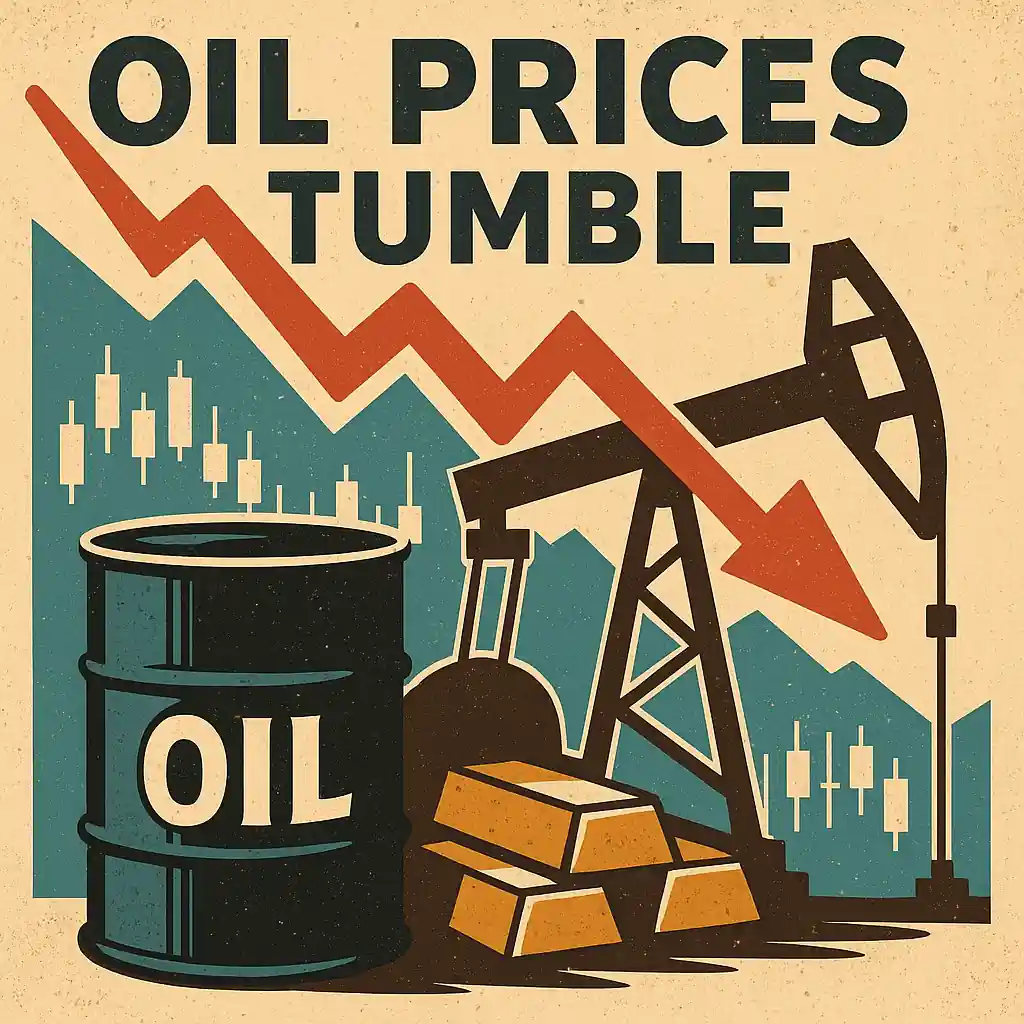Oil Prices Tumble on Fresh OPEC+ Supply Talks
Oil prices plunged this week amid fears of rising global supply. West Texas Intermediate fell nearly 2%, trading near $58 per barrel. That’s the lowest level since early 2021. OPEC+ is reportedly planning another output increase—potentially adding 400,000 barrels per day.
This follows a surprise hike last month. That move was meant to control non-compliant members. Now, however, a second boost threatens an already fragile oil market. The group has pushed its meeting to May 3, adding urgency to market speculation.
Supply Glut Threatens Market Stability
The potential production boost comes as global demand softens. China’s economy remains weak, limiting its oil consumption. Meanwhile, non-OPEC producers continue pumping at full capacity. These factors are pressuring prices across the board.
Analysts warn that inventories could swell by 200 million barrels over the next three quarters. If that happens, oil prices could slide into the low $50s. That would hit producers hard, especially those operating in high-cost regions.
OPEC+ Struggles With Member Compliance
OPEC’s latest strategy seems aimed at curbing production cheating. Iraq, Kazakhstan, and Russia have all been cited as overproducing. OPEC+ may now be raising official output to bring reality in line with targets.
But this could backfire. If oil floods the market faster than demand recovers, prices could collapse further. And that would harm both OPEC members and global producers relying on oil revenues to support budgets.
U.S. Energy Sector Feels the Heat
American oil producers are reacting quickly. U.S. shale firms plan to cut drilling activity by 4% this year. Chevron has already announced reduced share buybacks. A weaker oil market is forcing companies to conserve cash and reassess growth.
President Trump, who pledged to support U.S. energy independence, now faces a difficult market. His administration’s tariffs have added uncertainty. This combination of economic tension and oversupply is creating new risks for the oil sector.
Geopolitical Moves Add Volatility to Oil
The Trump administration continues using oil as a geopolitical tool. New secondary sanctions target buyers of Iranian crude. Similar actions are planned for nations sourcing oil from Venezuela.
China and India—key oil importers—are directly affected. These sanctions complicate trade, potentially reducing demand. And as trade wars escalate, oil becomes a victim of policy crossfire. This creates more volatility in an already unstable market.
Can Oil Recover Amid Mixed Global Signals?
There are still glimmers of hope. Talks between the U.S. and China may resume. A resolution could boost global confidence and energy demand. But for now, oil remains under intense pressure.
Prices are down nearly 20% this year. Inventories are building. And investors are losing confidence. Unless demand rebounds or OPEC+ shifts strategy, oil could stay low in the coming months.




